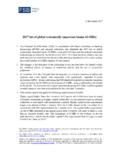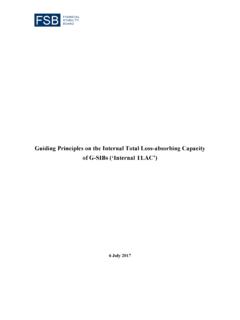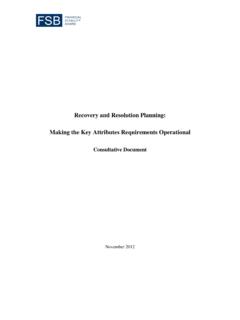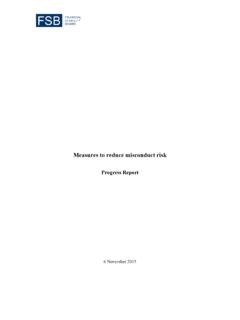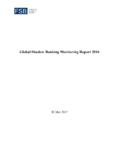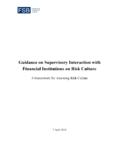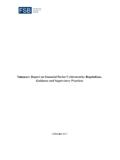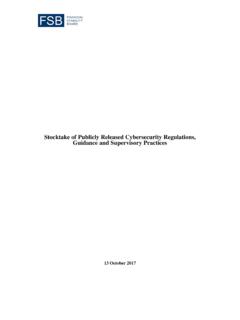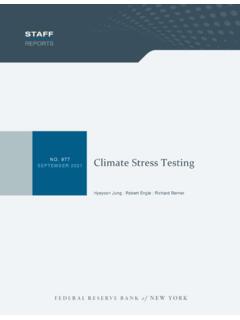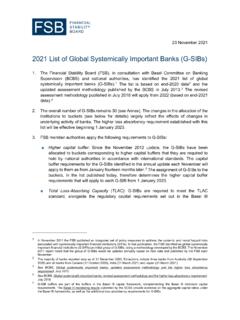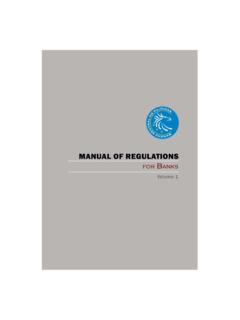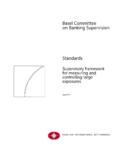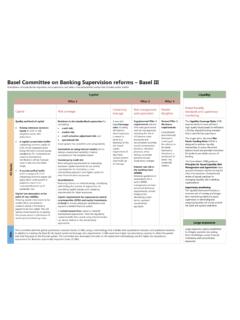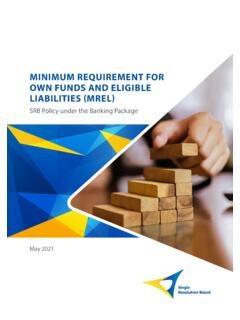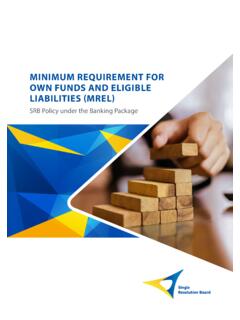Transcription of Recovery and resolution planning for SIFI
1 16 July 2013. Recovery and resolution planning for systemically Important Financial Institutions: Guidance on Identification of Critical Functions and Critical Shared Services 16 July 2013. 2. Table of Contents Introduction ..5. Criticality ..5. 1. Taxonomy ..7. 2. Framework for critical functions ..7. Definition ..7. Determination of critical functions ..7. Step 1: Assessing impact of failure ( Impact assessment )..8. Step 2: Evaluating the market for the function ( supply side analysis ) ..9. Step 3: Assessing the criticality of the function performed by a specific G-SIFI. ( firm-specific test ).
2 11. 3. Framework for critical shared services ..12. Definition ..12. Determination of critical shared services ..12. Key Annex: Functions and shared services that could be critical ..14. 1. Functions ..14. Deposit taking ..14. Lending and Loan Payments, Clearing, Custody & Settlement ..20. Wholesale Funding Markets ..24. Capital Markets and Investments activities ..27. 2. Shared services ..31. Finance-related shared services ..31. Operational shared services ..32. 3. 4. Introduction This Guidance should assist home and host authorities in meeting the Recovery and resolution planning requirements under the FSB Key Attributes of Effective resolution Regimes for Financial Institutions ( Key Attributes' or KAs).
3 1 It complements the Guidance set out in Annex II (Resolvability Assessments) and Annex III (Essential Elements of Recovery and resolution Plans) of the Key Attributes. A key component of Recovery and resolution planning is a strategic analysis that identifies the firm's essential and systemically important (or critical ) functions (see Section , Annex III). A strategic analysis of the firm's essential and systemically important functions is necessary for resolution planning and for assessing resolvability. It should help ensure that the resolution strategy and operational plan include appropriate actions that help maintain continuity of these functions while avoiding unnecessary destruction of value and minimising, where possible, the costs of resolution to home and host authorities and losses to creditors.
4 This guidance should assist authorities and CMGs in their evaluation of the criticality of functions that firms provide to the real economy and financial markets. It aims to promote a common understanding of which functions and shared services are critical by providing shared definitions and evaluation criteria. The guidance covers the functions and services provided by banks and therefore does not cover functions provided by insurance firms or financial market infrastructures (FMIs), though some elements of this guidance paper may be relevant to other sectors. 2. Within banks, the guidance focuses primarily on global systemically important banks (G- SIBs).
5 3 However, many aspects will also be relevant for domestic systemically important banks (D-SIBs). Criticality The designation of a function as critical does not imply that the function and all related liabilities will be protected in a resolution . Rather, the designation is meant to assist authorities in developing resolution strategies that minimise systemic disruption and preserve 1. 2. There is some relationship with the assessment methodology by the Basel Committee on Banking Supervision (BCBS) for global systemically important banks: see BCBS (2011), Global systemically Important Banks: Assessment Methodology and the Additional Loss Absorbency Requirement, However, the BCBS identified proxies to determine systemic relevance and to calculate higher loss absorbency requirements.
6 While those proxies measure some of the activities of a firm, they neither identify specific critical functions directly, nor cover all activities that might be seen as critical from the perspective of Recovery and resolution planning , which requires a more granular view. 3. The FSB published an initial list of G-SIFIs on 4 November 2011 and an updated list on 1 November 2012. which, in both cases, contained only G-SIBs. The group of G-SIFIs will be updated annually and published by the FSB each November. 5. value. For example, the designation of a particular function as critical should not lead market participants of that function to rely on it more than before on the assumption that the function will be maintained under all circumstances and that they will be immune from losses if the firm providing the function fails.
7 Criticality is not a binary concept. There is a spectrum of criticality. A resolution strategy will need to take into account the materiality and the potential impact that the failure to provide a certain function could have on the financial system and the broader economy. A firm may provide certain economic functions that are so elemental that they will need to be preserved in all circumstances. resolution strategies therefore need to include fall-back options that identify those most elemental functions and the conditions that need to be in place to ensure continuity of those functions in all resolution scenarios.
8 4. The Annex to the guidance provides indicative lists of functions that could exhibit some degree of criticality, but is not intended to be exhaustive. Authorities need to undertake their own assessment for each firm that takes into account market- and firm-specific aspects and the characteristics of a country's financial system, its economic and competitive landscape and the range of functions firms provide. As a result, the functions and services suggested in this guidance may be, but are not necessarily, critical for different firms in different markets. Similarly, there are functions not included in this guidance that could be critical in particular markets.
9 The firm-specific lists of critical functions will be one important input into the resolution planning process and the resolvability assessments. Firms may have a different view of what services or functions they consider critical , for example, by prioritising a firm's franchise value or profitable business lines. While such considerations can play a role in Recovery and may be relevant in more long-term restructuring, they are not the main focus of resolution planning which is focused on promoting financial stability and reducing negative externalities. 4. See FSB Guidance on Developing Effective resolution Strategies.
10 6. 1. Taxonomy This Guidance proposes a two-part definition of critical , based on a distinction between critical functions and critical shared services : Critical functions are activities performed for third parties where failure would lead to the disruption of services that are vital for the functioning of the real economy and for financial stability due to the banking group's size or market share, external and internal interconnectedness, complexity and cross-border activities. Examples include payments, custody, certain lending and deposit-taking activities in the commercial or retail sector, clearing and settling, limited segments of wholesale markets, market- making in certain securities and highly concentrated specialist lending sectors.
